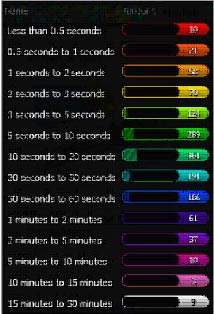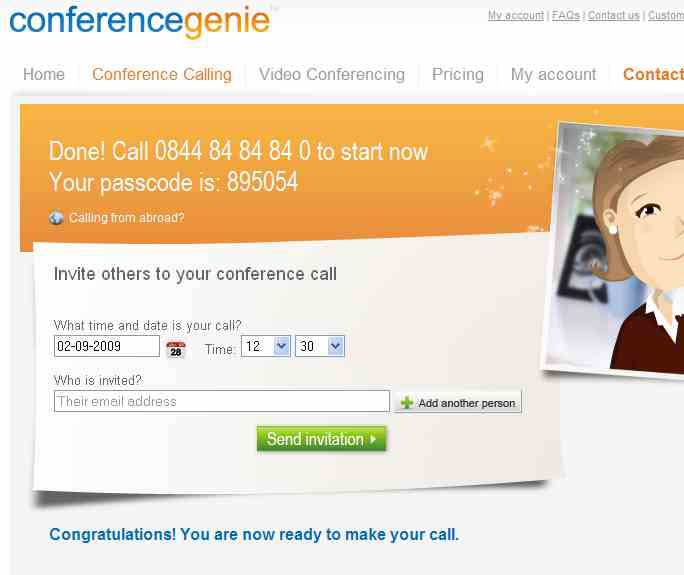At business school I was taught the way to make money was to make our assets sweat. I think they meant to get the most out of everything you owned and to make sure it was being worked night and day to maximum effect. And so at Datadial we try to do the same for our clients’ websites by making sure that they are focused on developing websites that maximise sales levels by being search engine friendly and that convert users in to buyers.
The usual reaction in squeezing more out of a website is to rush into a redevelopment exercise. Redeveloping a website is expensive that is often undertaken on a whim and without real research into what is working and what is not on the current website. Indeed it’s often the case that the current site is perfectly capable of delivering many more sales and that it just needs refining to improve the user experience.
This doesn’t need to be an expensive exercise. The key to successful marketing is to consistently test and measure everything that you do. Delivering fantastic conversion figures is within reach for us all, no matter how small the budget.
Here are four ways that we have carried out for some of our clients to help increase their onsite conversions at virtually no cost.
1) Online surveys
What better way to really understand your customers than to ask them for direct feedback? What is it that makes them want to buy from you rather than your competitors? How did they hear about you?
Carrying out market research will enable you to build on what you’re doing well and make any necessary adjustments and help you to grow. You will be surprised by how many people are willing to take the time to reply to surveys.
We recently did a survey for one of our clients Design911.co.uk which gave vital insight into user behaviour. Coupled with Click Tracking report (see below) Design911 have been able to fine tune their website to respond to users’ expectations and behaviour.
Below is a sample of the survey results that were produced.
2) Mouse tracking –
Why do other sites make it so difficult to buy anything from them? We’ve all experienced a confusing website at one point or another. But could your site also be suffering from usability issues? Find out where the sticking points are with Mouse tracking.
You may also find that users are trying to click on things on your site that are not designed to be clicked on. We found this with Design911:
With design 911 we found that that very few people clicked on the middle of the page and that lots of users tried clicking on ads on the right handside of the page which were not actually clickable. We found too that the search box was being under used as it was below the page fold and that users were taking at least 60 seconds to make a click on key navigation items.
3) Study your analytics
It’s all too tempting to gloss over your analytics reports – these reports contain vital information which reveal where users are getting stuck, turned on or turned off. Seems obvious to say it but unless you take the time to check what is going on on your site you will never be able to intelligently amend your site and measure the effect of your changes.
There is a mass of information to look at but here are 3 basic things to do
Check Bounce Rates: Bounce rates tell you if a visitor who has been directed to your site via a search engine or Adwords likes what they have found. If they leave the site immediately this is called a bounce. If this happens you need to question if you are showing the right products for the keyword search and if you could provide better information, or if they had come via Adwords, are your Adwords set up correctly.
Funnels: You can set up funnels to determine where people are dropping off over a series of pages (typically the shopping cart process). Different funnels can be set up for different goals.
Compare to previous periods: There are a number of trends such as time on site, the number of keywords that you are being found for, the number of pages per visit that are good to compare from onen time period to another so that you detect trends.
4) A/B Testing
Having pawed over your analytics you can then start making intelligent changes to your site. How will you make more people fill in your enquiry form? How can you get them to add one more thing to their basket. Take a look at the forms below and guess which one had the higher conversion rate.
This company carried out A/B testing on their sign up form and increased their conversion rate by 10%.
This is called A/B testing or Multivariate testing which we use to determine which images, copy and design most appeal to your customers and which version increases conversion. You can have as many or as few variables as you like when creating your A/B testing. Ideally you would set it up to automatically serve different versions of the page to alternate users but to save money you can do it on a week on/week off basis.
We helped Conference Genie increase conversions on their site by altering the sign up process. Interestingly we did it by making their site more complicated.
Weirdly the problem on this site was that it was too easy to use. Users could not believe that they could just dial a default number, punch in a code and start a conference call. So we made the site appear to generate a specific telephone number and a unique code for them. Turning a one step process into a two step process actually increased conversions.
Making small changes instead of wholesale changes was also recently backed by Peter Fitzgerald, who leads Google UK’s retail industry division. He said that the whole area of analytics – that’s technical jargon for examining the ways that people navigate websites when they shop online – has taken on new importance to retailers.
Simple changes can make the world of difference, particularly since statistics show that 50.1% of online shoppers who place items in their shopping carts still do not buy them.
By subtly altering a website’s layout based on how people use it, websites can increase sales significantly.
“There is often a lot of unimportant information on the top of a web page. If you move this information out of the way it can make a huge difference,” said Mr Fitzgerald.
For example when Comet, the electricals retailer owned by Kesa, the listed stores group, removed two bits of text from the top of its web page (saying ‘top checkout tips’ and ‘you’re safe with us’ respectively), its conversion rates increased by 6.7pc. “Online retailers are spending more time on analytics to see where things are going wrong,” said Mr Fitzgerald.
Department store group Debenhams recently tested the message and positioning of an online sign-up form for its Beauty Club. Improvements to it increased the number of customers the chain signed up by over 89pc. Little such tweaks are being made by online retailers as a means of gaining incremental sales. Experts say that the results of the small changes can be seen almost immediately.
Google’s Mr Brittin said: “By interpreting analytics data and continually testing their sites, retailers can really understand what consumers are looking for online. Often very small and seemingly obvious tweaks can boost sales significantly.”
All of the above exercises can be implemented fairly quickly and inexpensively. However, don’t underestimate the time you need to truly get to grips with your findings.
By constantly analysing the results and carrying out appropriate changes you will be able to squeeze every last conversion out of your site without incurring expensive redevelopment costs.













